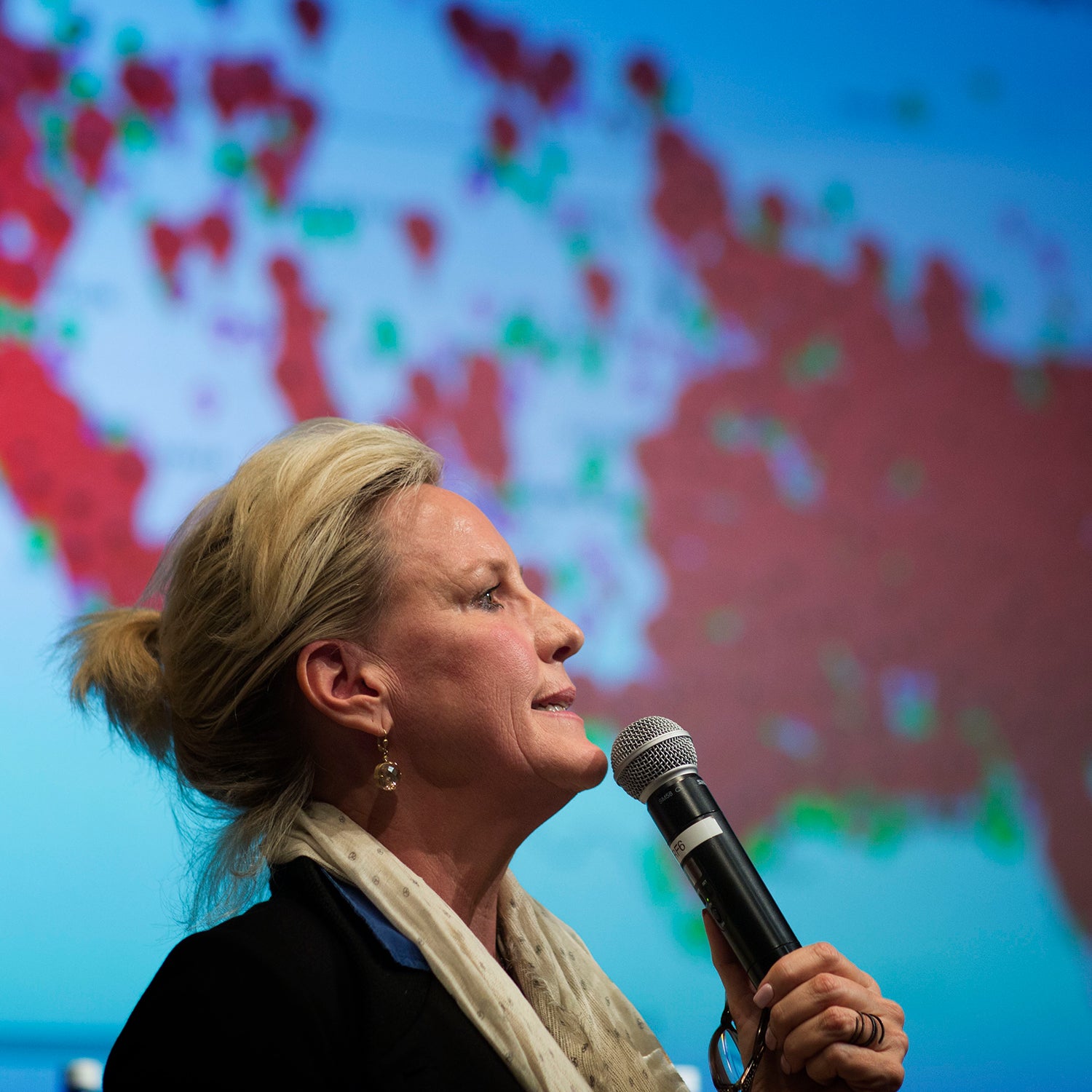You likely know Erin BrockovichÔÇÖs name because of the eponymous 2000 about her work in the early nineties uncovering Pacific Gas and ElectricÔÇÖs illegal discharge of the highly toxic chemical hexavalent chromium in the water of Hinkley, California. Julia Roberts played Brockovich╠řand memorably portrayed the young legal assistantÔÇÖs dogged pursuit of details, a trait that╠řultimately resulted in a╠ř$333 million settlement from the power company, the largest direct-action settlement in history. In the wake of the film, Roberts won an Academy Award for best actress, and BrockovichÔÇÖs name became a verb:╠řto Erin Brockovich someone was to fully, mercilessly expose them as a bad guy.╠ř
Now 60 years old, Brockovich is a full-time environmental advocate, and in the nearly three decades since the Hinkley case, she says things have gotten worse. No one is keeping tabs on a slew of , like ╠ř(PFAS) and neonics; the government agencies that were supposed to regulate pollution have ;╠řand environmental laws enacted in the 1970s havenÔÇÖt stood up to time and technology. Plus, climate change aggravates any kind of water stress.╠ř
Once she became a Technicolor touch point for exposing pollution, Brockovich started hearing from strangers of all stripes about their personal experiences: water coming out of the faucet flammable and brown,╠řa teenage friend group╠řriddled by cancer,╠řchildren who had never had a drink from a tap because their cityÔÇÖs water source was so toxic. Those stories are the backbone of her new book, , a readable mashup of self-help╠řmotivation and the science behind how pollutants move through water and impact human health.
We are living in a hyper-toxic time and no one, Brockovich says, is looking at the big picture of water pollution. Our infrastructure is crumbling and underfunded, the political system favors lobbyists, and the American industrial complex has been conditioned to ask for forgiveness rather than permission when it comes to polluting. And you canÔÇÖt expect Erin Brockovich to come in and Erin Brockovich for you, so the onus is on individuals to band together and use the levers they can reach to watchdog and regulate pollution.
Brockovich says she wants the book to give people a pathway toward changing local government, which she sees as the most effective way to address a systemic problem that extends to the federal level.
ÔÇťI think people are looking for permission, but what they really need is support,ÔÇŁ she told me╠řwhen I asked her why it felt important to write a book. ÔÇťI go into these communities, and people say, ÔÇśOh, the EPA is coming in, theyÔÇÖll get it sorted out.ÔÇÖ And I have to say, ÔÇśI hate to tell you, but superman isnÔÇÖt coming, and hereÔÇÖs what you can do.ÔÇÖÔÇŁ SheÔÇÖs been working on the book for years, but this summer, when public health and social justice are both at the forefront, her opinions╠řabout accountability and local political change feel╠řparticularly timely.╠ř
Much of SupermanÔÇÖs Not Coming╠řis grim, because water pollution is deadly, sneaky, and prevalent in vulnerable areas like CaliforniaÔÇÖs Central Valley or Flint, Michigan, which have still other high-risk health factors, like air pollution╠řand a lack of healthy food options. But BrockovichÔÇÖs point is that itÔÇÖs possible to change all that. She outlines cases where community organizersÔÇöoften mothers worried about their sick childrenÔÇöhave incited change. In Hannibal, Missouri, a group of local women fought to keep chloramines (cheap disinfectants╠řthat╠řare linked to rashes, respiratory issues, and cancer)╠řout of the cityÔÇÖs drinking water, taking╠řover city council along the way. Residents of Tonganoxie, Kansas, united╠řto prevent construction of a Tyson Foods chicken processing plant, which would╠řdump╠řwaste into their water.╠řBrockovich outlines how, , Tyson was the second-biggest waterway polluter in the country from 2010 to 2014, just ahead of the Department of Defense, and many of the pollutants it╠řreleases arenÔÇÖt regulated or measured. In both of those cases, and the rest of the stories she outlines, if locals hadnÔÇÖt lobbied, pollutants would have spread through the rivers and water pipes largely unnoticed until it was much too late. ÔÇťChemistry and physics say we can cut back on chemicals, but we have to really change human behavior,ÔÇŁ Brockovich says. ÔÇťI think that, as a society, weÔÇÖve been lulled to sleep.ÔÇŁ
ItÔÇÖs not just a small-town issue either; less╠řthan 1╠řpercent of chemicals on the market have been fully tested for human health, and their impacts show up all over. After the movie, when Brockovich began getting calls from other communities about suspected toxins and corresponding issues, each╠řtime she heard about╠řfive people with similar disease patterns, she put a red dot on a map. Today╠řmost of the map is speckled red, with tens of thousands of dots. ÔÇťThis has been a system-wide failure over decades,ÔÇŁ she says. ÔÇťWe feel out of control.ÔÇŁ She says that after watching Pacific Gas and Electric╠řcut corners and try to cover up spills and plumes, sheÔÇÖs started to notice negligence patterns, and╠řthereÔÇÖs no national╠řdatabase for those toxic hot spots.╠ř
ÔÇťWe put the chemical in the water system and then try to deal with it when we find out thereÔÇÖs a problem,ÔÇŁ she says. ÔÇťThat is ass-backward. WeÔÇÖre relying on old, antiquated policies and ideas that we put into place years ago.ÔÇŁ
Brockovich is a vocal, no-nonsense writerÔÇöRoberts might even have downplayed her fire in the movieÔÇöand the book is most interesting and relevant when sheÔÇÖs focused and mad. The tales╠řshe tells show what weÔÇÖre up against when it comes to clean water. But now, when it feels like irrecoverable environmental issues are ever present, they also demonstrate╠řwhere change has happened and how addressing water issues at the source can make a big difference all the way down the chain.
ÔÇťWeÔÇÖre a land of laws, and we need major reform in some of our environmental laws,ÔÇŁ she says. ÔÇťWeÔÇÖre not asking you to wipe out the Constitution, weÔÇÖre asking for reform on an issue thatÔÇÖs impacting all of us.ÔÇŁ


